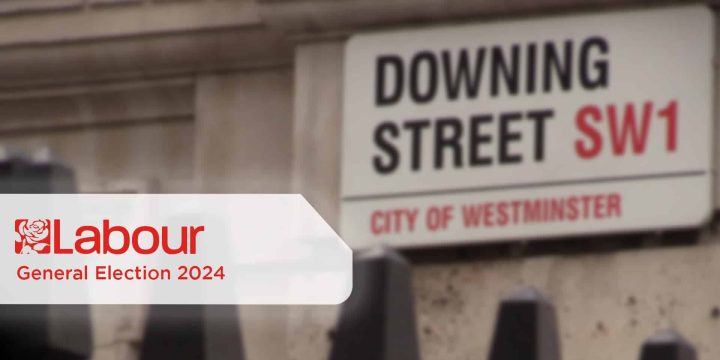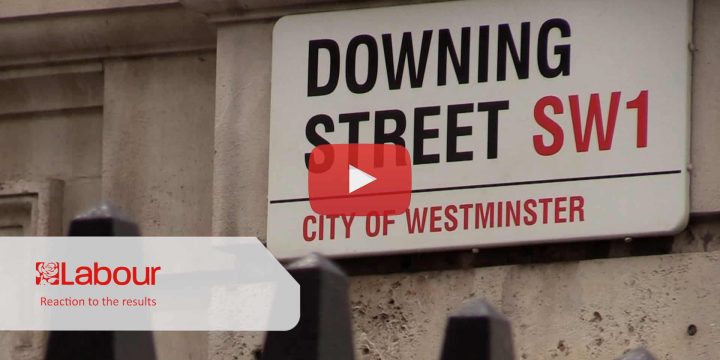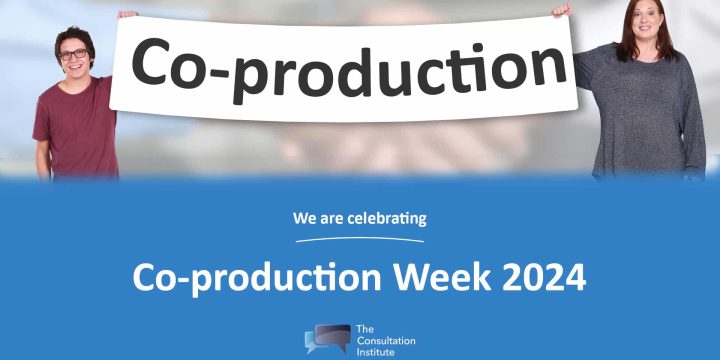News & Insights
The worst consultation narrative of the year?
A critique of the documentation published to support a consultation on proposals for changes to services at the Friarage Hospital.
At the Institute we are, as you’d expect, fans of a solid consultation narrative. We’re privileged to contribute to a fair few, helping our members and clients to take account of the latest requirements and push the boundaries of best practice. There’s always lots to learn and we take great joy in seeing proposals clearly set out and well explained.
It’s true that most consultation documents could be improved in some respect. Creating a straightforward narrative to support change proposals is no easy task and this week we’ve seen a thankfully rare example of how easy it is to fall short of reasonable expectations.
NHS Commissioners in North Yorkshire have published a suite of materials at the start of a consultation on proposed changes to the services offered at the Friarage Hospital in Northallerton. There are good things to say about the summary narrative, the survey is better than many others, and the communications and engagement strategy is solid. But the main consultation narrative struck us as particularly poor.
We asked our Founder Director Rhion Jones to take a more detailed look at what we can all learn from the document and the points the consultor could address in the consultation process. Take a look at what he had to say.
On 13 September Hambleton, Richmond and Whitby Clinical Commissioning Group launched a public consultation on the future of services at the Friarage Hospital in Northallerton, North Yorkshire.
The suite of consultation documents published extended to:
- Summary Consultation Narrative
- Consultation Narrative
- Communications and Engagement Strategy
- Equality and Health Impact Assessment
- Survey
- Press Release 13.09.19
- Stakeholder Briefing
- Poster
- Flyer
In the week following the launch, the consultor has also published an Easy Read Consultation Document. All the documentation is available on the consultation web page.
Before examining these documents, we must stress that the Institute holds no view whatever as to the merits or otherwise of proposals under consideration – by the NHS or any other public body for that matter. We are concerned, however with encouraging good practice, and the quality of a consultation document is one of the more important hallmarks of successful public engagement. Whenever we undertake a Quality Assurance, we look for total clarity and a style/language that is accessible to the general public. To comply with legislation and the published Guidance, we expect to see a detailed rationale for the proposals being offered for consultation and evidence that the required public and patient involvement has been undertaken.
In this case, we found multiple weaknesses, which we group, loosely into four categories:
Language, Style and Content
- The document is not short – 9,000 words over 26 pages and clearly has not been written for the general public. Strangely, it is called a ‘Summary case’. From what we can see, it is the definitive consultation document, but some of it reads like an academic dissertation. For example:
As with stroke and cardiac care, there is also increasing evidence of the volume quality relationship for complex medical care: for example, in the provision of Critical Care medicine (Abbenbroek et al 2014, Nguyen et al 2015) and colorectal cancer surgery (Huo 2017)
- It uses too much jargon. What are readers expected to make of phrases like ‘robust repatriation protocols’ ‘ambulatory care’, a ‘documented ceiling or care’, ‘initial differential diagnoses’ or patients will be ‘risk-stratified’.
- The Institute is well aware of the challenges inherent in converting clinician-speak into consultation papers, but this is worse than most we have seen.
- Moreover, the material is repetitive and badly presented. There are ten Sections mostly consisting of unnumbered text paragraphs (except for Sections 5 and 6 which have subsections, both numbered and unnumbered). It means that respondents wishing to refer to a statement in the consultation paper would need to write something like …In your 6th bullet point in Paragraph 4 of that part of Section 6.1 under the heading ‘Anaesthetic model’….
- It is amateurish and would be surprised if it met the standards normally expected by NHS England as part of its Assurance process.
Confusion and Contradictions
- The consultation is meant to be both about the ‘future vision’ for the Friarage Hospital in Northallerton and also the more immediate configuration of urgent and emergency care at the Hospital. For those services, it says that the CCGs have identified ‘two preferred options’ – a novelty in our experience.
- Further study of the document reveals that there is in fact only one option – an Urgent Treatment Centre, and the public is asked for its views as to whether it should be permanently open (7*24 hours) or restricted to 16 hours each day. Experience suggests that it is a pretty disingenuous choice, and much of the narrative is an explanation of why the reduced hours option is clearly better by being cheaper and more sustainable – meaning presumably that the alternative option will be vulnerable to future cuts.
- Confusingly, the paper then asserts that its own CCG Governing Body found the 24-hour model preferable, whereas the Clinical Senate is quoted (without any contextual reference) as commending the solution “that does not rely on 24/7 resident anaesthetic cover”. We think this means it prefers the reduced hours model. And yet?
- Further confusions are found in contradictory statements about the likelihood that the Hospital might admit ‘acutely unwell patients’.
- Under Section 6.1, sub-heading ‘Maintaining patient safety’, the paper details ten bullet point characteristics of its future modus operandi but does not explain which of these are merely continuations of existing practice and which are new processes contingent upon implementing the proposed services changes.
- The document mentions some of the findings of the Carnall Farrar Independent Review of the urgent temporary changes introduced in March 2019. By referring only to one of the three questions set by the local MP who commissioned the exercise, it leaves readers uncertain whether they have all the information they might need to respond to the consultation. Among the reported findings is a comment that the new model of care requires an adequate workforce to deliver it. The paper contains no information as to whether the CCGs will be able to ensure this happens.
- Given the references to the Hospital’s in-patient bed capacity, it is by no means clear whether the proposals involve a reduction in this capacity – in which case the NHS England Bed Closure test would need to be met. Interestingly, we think this is the first time we have seen consultation proposals for service change in a Hospital that does not start with the words “XXX Hospital has nnn beds …” Readers of this document will be no wiser.
Inadequacy of Impact Assessments
- Recent developments in best practice along with a legion of Judicial Reviews have focused on the paramount need for adequate assessment of impacts. Section 8 of the document lists four ‘full impact assessments’ that the CCG says have been prepared – on equality, quality, privacy and sustainability. Although all four are said to be available upon request, as of the date of writing only the `Equality Impact assessment (It is now meant to be an Equality Analysis) is available on the CCG website.
- Contrary to best practice the consultation document does not say what the impact of the proposals are meant to be. It is not credible that during the pre-consultation period, no adverse impacts were identified, either to protected categories under the 2010 Equality Act or to health outcomes as assessed in the Joint Strategic Needs Assessment (JSNA)
- Centralisation of services elsewhere in the NHS normally means identifying additional travel time as an inevitable consequence. The published Equality Impact Assessment identifies no such impact, but there is no evidence as to why this area is different from others. The questionnaire clearly suggests that the NHS expects patients to encounter difficulties in making longer journeys to use key services.
- Misleadingly, the Carnall Farrar Report headlines include the sentence:-“Travel time analysis and clinical studies evidence suggests there should be no impact on patient mortality as a result of the changes and change in travel patterns.” It is not clear whether this refers to the changes already implemented and the subject of the Report’s terms of reference, or whether it is a speculative assertion in respect of those consultation proposals which are yet to be decided upon and implemented.
No evidence that Public & Patient concerns have been addressed
- NHS Guidance is clear that a consultation paper should explain ‘how final options were identified and developed, including the role of public and patient engagement’.
- There is also a statutory requirement to involve them in the ‘development’ and ‘consideration’ of proposals. This document is not sufficiently clear as to the extent to which this occurred.
- It states that there were 12 public engagement events in 2017 but these appear to have been to hear explanations of the challenges facing the NHS and provide feedback on public priorities. This is far from active involvement in options development; these appear to have emerged only from clinical working groups.
- There is no clarity as to who undertook the options appraisal or what scenarios were considered. The list of criteria includes ‘affordability’ but with no indication of what the NHS considered to be affordable. Consultees would be in no position to consider or challenge the appraisal without knowing what the criterion meant.
- In Section 10, called Conclusions, the paper acknowledges that public and patient engagement had identified three serious issues.
-
- Ongoing fears for the future of the Friarage overall
- Concerns relating to the possibility of increased travel distances and the availability of public transport to access inpatient care, should services at the Friarage Hospital not be available
- Queries relating to the detail and practicalities of the community-based treatment model and the move away from secondary care
Unfortunately, the consultation paper scarcely addresses these issues.
In summary, this is a very disappointing consultation paper.
Insofar as the NHS would need to show that it met the Gunning Principles, it makes the CCGs vulnerable on two grounds. Firstly, it might risk challenge as being pre-determined (Gunning One). Despite references to two scenarios that were dismissed as unviable, the options offered for consultation feel like a ‘done deal’ with little scope for further influence by consultees. Secondly, the Gunning Two obligation to provide sufficient information as to enable consultees to give proposals ‘intelligent consideration’ requires excellent communications by consultors. Were the CCG to rely solely on this document, it would surely fail to meet that standard. In the event, other materials on the website – as we noted at the beginning – are better and might just save the NHS’s blushes.
Nevertheless, the fact that a major service change of this nature could be consulted upon with such a poor consultation document raises several questions:-
- Was it properly tested for readability and comprehension with a panel of typical consultees?
- Was it subject to NHS England’s Assurance process, and did it meet that organisation’s standards?
- Will the relevant Scrutiny Committees and Healthwatch find this an acceptable standard of communication with local people?



